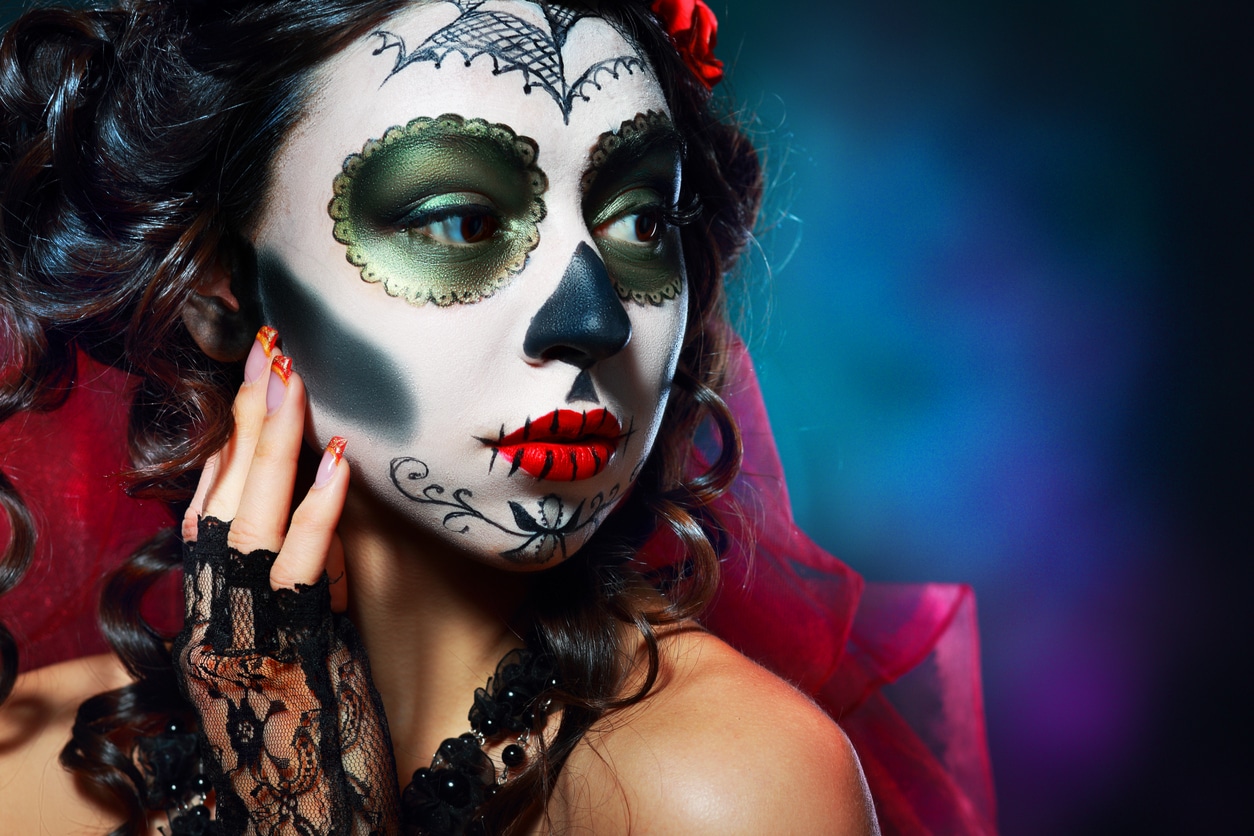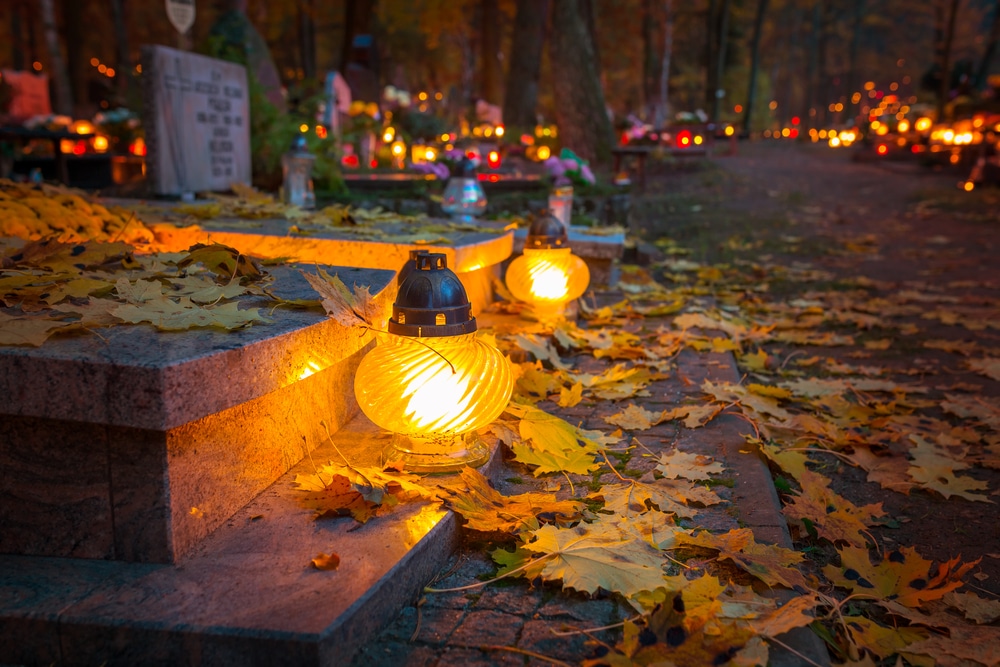1.trick-or-treating – csokit vagy csalunk
2.to carve pumpkins – tökfaragás
3.to attend church – templomba menni
4.cemeteries – temetők
5.to lay flowers and candles on the graves of their deceased loved ones – virágot és gyertyát helyeznek elhunyt szeretteik sírjára
6.commemoration – megemlékezés
7.to receive salvation – üdvözülést kapni
8.to maintain the graves – gondozni a sírokat
9.chrysanthemum – krizantém
10.tombs – sírok, síremlékek, sírkövek
11.decorated wreaths – feldíszített koszorúk
12.the liberated souls to return to their own graves – a felszabadult lelkek visszatérnek a saját sírjukba
13.to emerge from the grave – kimászni a sírból
14.skeletons –csontvázak
Allhallowtide
Halloween, All Saints’ and All Souls’ Day all fall on different – though consecutive – days, thus the confusion. However, they all belong to the same festive cycle, the Allhallowtide, with a pagan holiday as the basis, later Christianized and expanded.
Halloween – 31st of October
Halloween, or All Hallows’ Eve, is on October 31st, the evening before Western Christians celebrate All Saints’ Day. With this day, a three-day-long observance of Allhallowtide starts, the time in the liturgical year dedicated to remembering the dead, including saints, martyrs, and our loved ones who have died. It is said that Halloween traditions originated from ancient Celtic harvest festivals, such as the Gaelic Samhain.
Celts divided the year into two seasons: winter began on the night of October 31st. They believed that the sun god Samhain would be captured by the god of death and darkness, who would summon the spirits of the dead on the night of October 31st.
Interestingly, after the spread of Christianity, the festival was not banned, but Christianized as Halloween by the early Church.
The modern Halloween traditions include trick-or-treating for which children dress in costumes and collect candy and chocolates in their neighborhoods, costume parties, and carving pumpkins into Jack-o-Lanterns.
All Saints’ Day – November 1st
Also known as All Hallows’ Day, this holiday is held on the day after Halloween, as early Christians tried to adapt their holidays and practices to the existing pagan ones. Thus, All Saints’ Day was connected to the day of the former Celtic dead cult.
The new Christian holiday was officially recognized by the church in 835 and since then, it has been held on the 1st of November.
On All Saints’ Day, it is common for families to attend church, as well as visit cemeteries in order to lay flowers and candles on the graves of their deceased loved ones. This is why many cemeteries are operating with longer opening hours. It is a Solemnity in the Roman Rite of the Catholic Church and a national holiday in many historically Christian countries, so in Hungary as well.
All Souls’ Day – November 2nd
Later, the following day, November 2nd, was also declared a holy day: the Day of the Dead, or All Souls’ Day.
Also known as the commemoration of all the faithful departed, that is, of the souls of all Christians who died but have not yet received salvation, who are currently in purgatory.
Gradually, the Day of the Dead has evolved from a religious holiday into a general commemoration of departed loved ones. In many European countries, including Hungary, people usually visit and maintain the graves of their deceased relatives on these days, lighting candles and placing flowers. As the chrysanthemum opens during this period, tombs in Hungary are usually decorated with this flower or with decorated wreaths. The original purpose of these traditions was for the liberated souls to return to their own graves – as, in the past, even many Christians thought that the dead would emerge from the grave at this time.
In many Latin countries, November 2nd is a national holiday, Dia de los Muertos, the climax of the Days of the Dead. It’s the climax of three days of celebration: All Hallow’s Eve, All Saints’ Day and All Souls’ Day. People often dress as skeletons as a way of remembering the dead and celebrating their ancestors.
source: Halloween, All Saints’ Day and All Souls’ Day – Can We Celebrate them all?, Hungary Today; What is the difference between All Saints Day, All Souls Day and Halloween?, AL.com
Vocabulary
| consecutive | egymás utáni |
| confusion | zűrzavar |
| pagan | pogány |
| to expand | kibővíteni |
| to dedicate | szentelni |
| to divide | felosztani |
| to capture | elfogni |
| summon | megidézni |
| to ban | betiltani |
| to include | hozzá tartozik, magába foglalni |
| to adapt | hozzáigazítani |
| existing | meglévő |
| former | korábbi |
| to recognize | elismerni |
| common | gyakori, általános |
| Solemnity | Ünnepélyesség |
| to declare | nyilvánítani |
| faithful | hívő |
| currently | jelenleg |
| to evolve | kialakulni |
| climax | csúcspont |
| ancestors | ősök |






